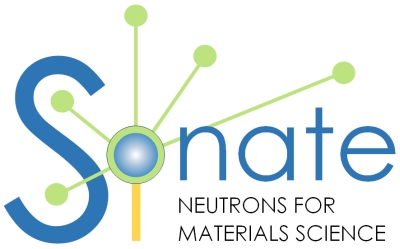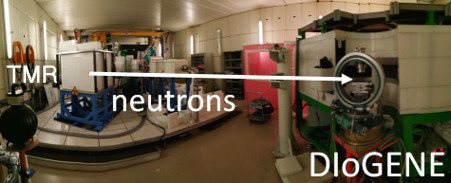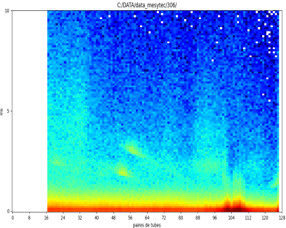The objective of the realization of efficient compact neutron sources is to make it possible to perform neutron scattering experiments, with practically the same qualities as those carried out with neutron beam lines from research reactors of the Orphée type*.
These compact sources are obtained from a protons beam of medium-energy (3-50 MeV) and high current (100 mA) impinging on a light element target as beryllium. This interaction creates a neutron emission. In order to be used routinely, the target must be able to withstand long exposure to high irradiation without loss of performance.
The LLB and IRFU teams have realized a beryllium target implanted at the exit of the high intensity proton injector – IPHI (3 MeV) at Saclay. They show that with this device it is possible to obtain the intensity of neutrons necessary to carry out a diffraction experiment in a reasonable time, demonstrating the competitiveness of such a source for neutron scattering compared to current small and medium power nuclear reactors.
*Former research reactor at Saclay, now shutdown.

The LLB is currently evaluating the performances that can be achieved with compact high brilliance neutron sources (HiCANS – High brilliance Compact Accelerator-driven Neutron Source). In the framework of the “Sonate” project, the objective is to provide the French neutron scattering community with access to a suite of instruments (scattering, diffraction, imaging…) by 2025. To reach this goal, some challenges must be met, in particular the construction of a reliable beryllium target for converting the proton beam into neutrons. The objective of the IPHI-neutrons project, co-funded by the CEA and the Ile-de-France region, is to propose solutions to these challenges.

The Léon Brillouin Laboratory and IRFU at Saclay have designed and built a beryllium target with the aim of eventually supporting a 50 kW grazing beam sweeping the surface of the target for 1000 hours (or a 30 kW fixed beam). This target has recently been successfully tested at the IPHI accelerator in Saclay. Between January 26 and February 11, 2022, the prototype target was operated with a fixed beam power of 28 kW, for 100 hours (93% of the intended power) and 31 kW for more than 5 hours, validating the target design. During the test period, first diffraction experiments have been performed with the Diogene instrument.


These first measurements were performed with a non-optimized pulse duration and repetition rate of the accelerator. They show that under optimized conditions, the measurements would be performed in 1 or 2 minutes. The use of proton beams of the same intensity (100 mA) but at higher energy (20 MeV instead of 3 MeV) would increase the neutron flux by more than a factor of 100. The compact source will then be very competitive with neutron scattering study beam lines from small and medium power nuclear reactors.
Contact CEA-Iramis: Frédéric Ott (LLB/NFMQ) et Burkhard Annighöfer (LLB/Infra).
Contact CEA-Irfu: Jérome Schwindling, Département d’'études et de développements pour les accélérateurs (IRFU/DACM).
Collaboration:
- Léon Brillouin Laboratory, UMR 12 CEA-CNRS, Saclay
- IRFU, Institut de Recherche sur les Lois Fondamentales de l'Univers, CEA-Saclay.




